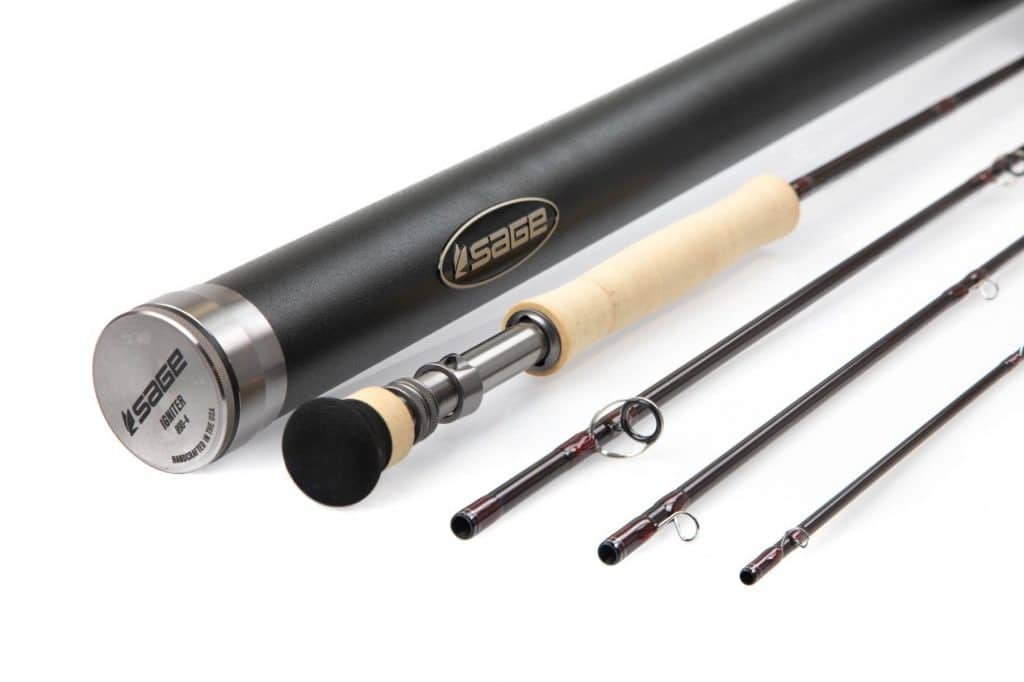
Choosing a Fly Rod for Bonefish
Thanks to our friends at Trident Fly Fishing for these great suggestions on choosing a fly rod for bonefish | The topic of choosing a fly rod for Bonefish is particularly relevant as we muddle through the winter season and begin looking forward to warm-weather saltwater getaways. Whether you’re venturing to the Bahamas, Belize, Christmas Island, or even Hawaii, a proper Bonefish setup can play a significant role in making or breaking the trip of a lifetime. In-depth knowledge of fisheries, weather patterns, and personal preferences is imperative when traveling to fly fish, and choosing the right fly rod for Bonefish follows these three reflections closely.
Most anglers’ default nod goes to an 8wt when targeting the Grey Ghost of the flats. While the 8wt is surely a front runner in any Bonefish conversation, there are times when an 8wt is too much rod and there are times when a rod with a bit more backbone is required. How do you choose? We’ll get into that. First, let’s hear what the experts have to say:
“Big Hawaiian Bonefish are our bread and butter and there are a couple of givens here; fish are really big, flies are often heavily weighted, shots are generally not that long, and the wind blows a lot. An 8 weight has the backbone to launch a lead eyed fly into our 20-knot tradewinds with enough feel and control to drop it accurately on a beasty tailing Hawaiian Bonefish. A solid #8 will also allow you to follow up your first cast with an accurate quick second shot, often at a significantly longer or shorter distance.
We also spend a lot of time each year hosting anglers on Christmas Island where it’s a whole different ball game. At CXI accurate casts with small flies produces in a big way. It’s mostly close range wading so a fast-action 6 weight like the SAGE Salt HD, with one of the next generation lines like the RIO Flats Pro works out great. These lighter rods are super accurate and very comfortable to carry, making lots of casts over the course of the week a breeze. Most importantly, you can drop your fly on a dime allowing you get close, but not too close, over and over again.”
-Captain ‘Bonefish’ Rick Lee, Bonefish Hawaii
“The destination IS important if anglers have found an out of the wind, shallow puddle with no Bonefish over 3lbs, OR, they are going to Hawaii or New Caledonia. Other than this, Bonefish rods will be a 9 foot 7 to 9 weight for 95% of the fishermen out there.
I like to use flies that are heavier and bigger than most because I don’t fish way back in the shallows with weightless flies. All my fishing is ocean side, surf or flats near deeper water, that’s my choice. In these areas, I want to have on a size 4 fly with a lead head. This leaves the possibility of catching Permit, Jacks, Snook, Tarpon anything that swims by. For this reason, I carry an #8 or a #9.”
-Nick Denbow
Weather patterns can be unpredictable in saltwater environments and are certainly worth carefully contemplating before any fly fishing trip for a multitude of reasons. How does weather influence fly rod selection when targeting Bonefish? Tough question.
Wind is a primary concern when dealing with weather in saltwater fisheries. If you find yourself wading the flats on a calm day in glassy water, a 9wt and even an 8wt may be too much rod. Bonefish are spooky, so anglers who can make a delicate, and accurate presentation are often rewarded. A 6wt rod will provide an angler the best opportunity to artfully lay out a small fly in a windless environment. If (and perhaps when) the wind picks up, larger rods with faster actions help fly line cut through the wind to reach your desired target. A 9wt rod affords an angler power, reach, and ultimate versatility when the weather takes a turn for the worst.
Do some research, know what typical weather patterns occupy your travel destination, and make an informed decision. Due to the unpredictability of wind, weather, and rain, it sometimes pays to bring two rods so you can quickly upgrade when that maritime gust starts to blow back your hair.
It’s a fact that Bonefish reach weights of over 10 lbs. I wouldn’t want to wrangle a 12 lb Bonefish on a 6wt, and I bet you wouldn’t, either. More commonly, however, especially in Mexico, Central America, and Christmas Island Bonefish usually range from 2 lbs to about 5 lbs. Matching rod size with fish size is a fly fishing tradition we’re all familiar with, one that holds true when hunting Bones. Bonefish Rick agrees. “Like any type of fly fishing, it’s important to match your Bonefish rod to the… size of the fish you’re after”.
If you’re planning on targeting trophy Bonefish in, say, the Seychelles or Hawaii, an 8wt or 9wt will drastically improve your chances of landing that freak-fish. Conversely, a 6wt will show off that 2 lb Bonefish beautifully if you’re looking to get the most out of your fishy stay in Mexico.
Fly choice follows a similar intuition. Smaller fish typically (not always) feed on smaller crabs, shrimp, worms, etc. A lighter rod will present smaller flies more delicately and accurately. If you’re throwing big flies to big fish in a headwind, well, you’re going to need a big rod. It’s that simple.
Finally, I’m going to insert a well-known phrase here that should be consulted whenever choosing a fly rod: you get out what you put in. If you buy the top-of-the-line saltwater fly rod, chances are it’s going to perform. If you only fly fish a few times a year, maybe a high-performance mid-priced rod makes more sense. Ultimately, every angler has to ask him/herself what he/she hopes to achieve on the water.
If you’re someone who prioritizes landing fish quickly, a heavier rod model like an 8wt will help you do that. If you’d rather a sporty challenge after coming tight with a Bonefish, perhaps a 6wt makes more sense. Whichever extreme you identify closest with, we highly recommend a fast action rod. It’s important to be able to pick up fly line off the water and make an accurate, timely cast when targeting Bonefish. The fewer false casts, the better. If you’re someone who knows you can do that with a medium-fast action rod, that’s just the kind of personal preference worth considering when buying a Bonefish rod.
What if you don’t know which rod model or action type you prefer? We’ve got you covered.








